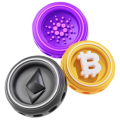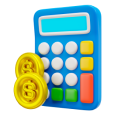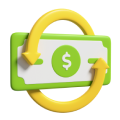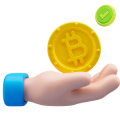AML/KYC Policy
The administration of the ExchagePool service, understanding the public danger of crimes related to money laundering and terrorist financing, has approved a set of organizational and legal measures in order to comply with the provisions of national legislation, as well as the requirements of the intergovernmental organization FATF.
KYC verification: what is it and where is it used?
- What is the KYC procedure and why is so much attention paid to it? We will tell you how it can protect you from fraudsters while maintaining anonymity. KYC and AML checks: why is identity verification needed in the cryptocurrency sphere. KYC (Know Your Customer) is a procedure for verifying the client’s identity and assessing potential risks from him. But why is it needed and why is it almost impossible to buy cryptocurrency today without confirming your identity? Doesn’t this contradict the original principles of anonymity and decentralization of the crypto industry? Today we will analyze why AML and KYC checks are needed and how they work. We will also tell you how verification will help reduce the number of fraudsters while maintaining the basic anonymity of users.
What is AML and what is it for?
- Anti-Money Laundering is a set of measures to combat money laundering, terrorist financing and the creation of weapons of mass destruction. This procedure includes identification, storage and mutual exchange of information about clients, their profits and transactions between financial institutions and government agencies. Most classic financial institutions use AML measures to check businesses that work with cash or use cash as one of the main assets. They also check those businesses that have money in different accounts, regularly transfer it to other countries and banks, buy futures and other instruments for cash payments. In other words, all businesses that can potentially bypass financial monitoring and launder funds fall under verification.
What does the address check show?
- Overall Risk (in percent) – the probability that the address is associated with illegal activity. Risk sources are known types of services that the address has interacted with, and the percentage of funds received from / given to these services, by which the overall risk is calculated.
Why do services insist on AML procedures?
- If the service does not conduct such checks, then fraudsters can use it as a platform for money laundering and terrorist financing. And then the service itself will be held liable. That is why exchanges and other large cryptocurrency companies implement AML requirements in their business and conduct regular KYC verifications.
How to understand risk assessment?
- – 0−25% − this is a clean wallet/transaction;
- – 25−75% − this is an average risk level;
- – 75%+ − such a wallet/transaction is considered risky
- The risk is more than 50%, but I am sure that the address is reliable. What should I do? The verification results are based on international databases that are constantly updated. Therefore, an address that had 0% risk yesterday could receive or give an asset to a risky counterparty today. In this case, the risk assessment will change.
What should I do if my funds have been blocked?
- To confirm the origin of the funds, we ask users to answer the following questions in full:
- – through which platform did you receive the funds? If possible, please provide screenshots from the withdrawal history of the sender’s wallet/platform, as well as a link to the transaction in the browser;
- – for what service did you receive the funds;
- – for what amount was the transaction, as well as the date and time it was carried out; – through which contact person did you communicate with the sender of the funds? If possible, please provide screenshots of the correspondence with the sender, where we can see confirmation of the sending of funds.
- – through which contact person did you communicate with the sender of the funds? If possible, please provide screenshots of the correspondence with the sender, where we can see confirmation of sending funds.
- – screenshots of the withdrawal from the platform from which the counterparty transferred funds to you, where the transaction details will be visible.
- If your transaction was blocked, the exchange of funds is not possible, the application will be blocked. Funds can be returned ONLY to the sender’s address. When returning funds, a commission of up to 10% of the exchange amount or the amount of the network commission in which the exchange was made may be charged.
Contacts and support
If you have any questions, please visit our FAQ section or contact our support team via chat, telegram or email





